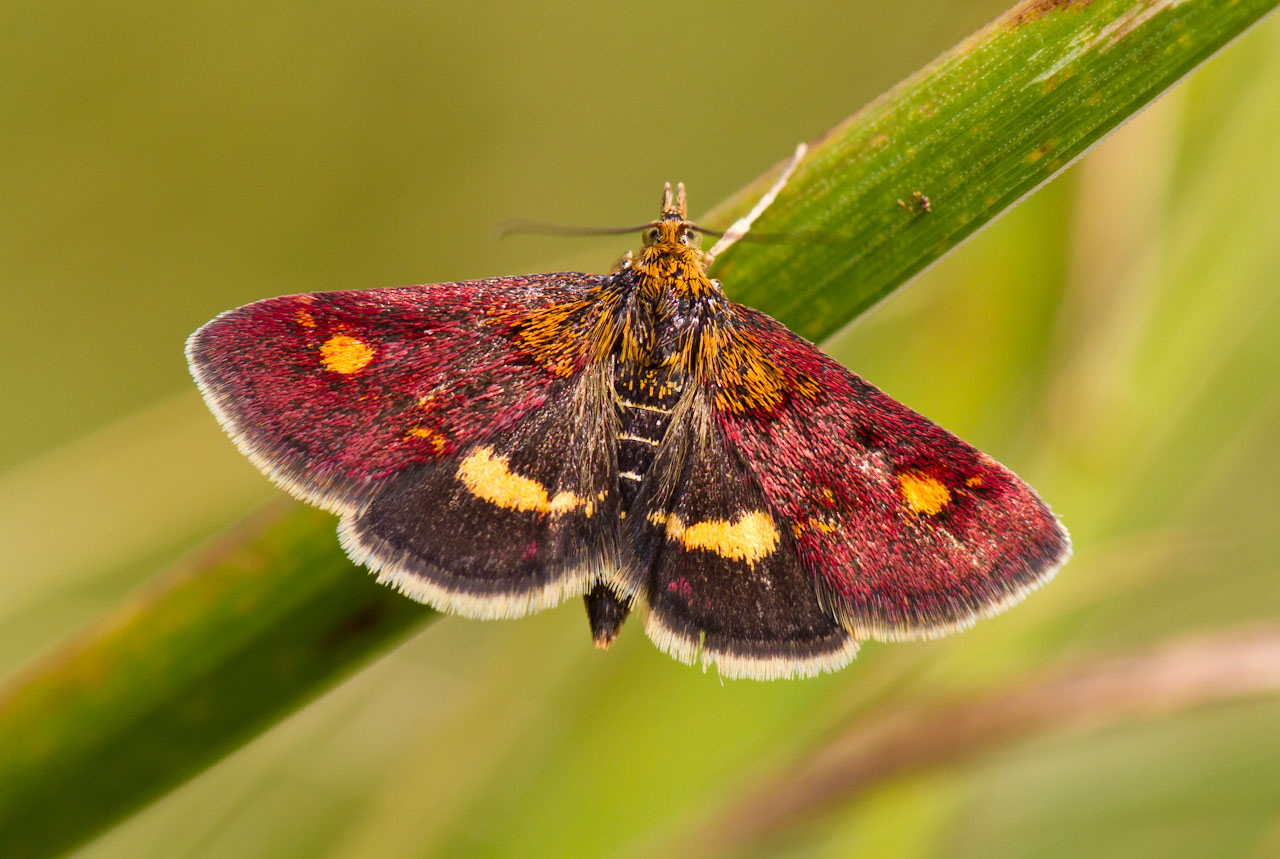Being a committed wildlife gardener means compromising a little on the tidiness of your garden to protect the overwintering sites of insects and other creatures.
Hopefully in the autumn you left some of the seedheads on your border perennials such as Hemp Agrimony Eupatorium cannabinum, Globe Thistle Echinops spp. and Sea Holly Eryngium spp. along with biennials such as Honesty Lunaria annua and Teasel Dipascus fullonum. You might have discovered how beautiful they can look when covered in frost.
Some of the tall stems could have started to fall over and look messy and on warmer days it is tempting to start cutting things down and tidying up the dead leaves around the base of plants. However, please wait a bit longer until the frosts have passed in spring. Not only do the seeds provide birds with food but the seedheads and hollow stems can provide shelter for various insects. Long grass and dead leaves can also provide safe havens for several moth and butterfly life cycle stages, protecting them from winter weather and predators.
Many more moths and butterflies overwinter in the larval (caterpillar) stage than as a pupa, with smaller numbers overwintering as eggs or adults. A few are capable of overwintering in more than one stage - the Speckled Wood butterfly can overwinter as a caterpillar or a pupa.
Adult moths can hibernate under the bark of logs or deep in amongst dense ivy, whilst some, such as the Buttoned Snout or Herald may even take advantage of the shelter provided by the garden shed. Butterflies that overwinter as dormant adults include the Brimstone, Small Tortoiseshell, Peacock and Comma.
If you are lucky your garden could host the overwintering caterpillars of one or more of the spectacular tiger moths, including the ‘woolly bear’ caterpillars of the Garden Tiger, or even the Scarlet or Jersey Tiger. These will look for shelter to pass the winter whilst still small, such as amongst piles of leaves or at the base of a sheltered plant, but will need plants such as dandelion, stinging nettles, comfrey and plantain on which to feed. Leaving common weeds in situ will actually benefit a wide range of species. The caterpillars of several species of noctuid moth can feed on milder nights over winter but by day burrow down in grass tussocks or denser vegetation to hide at ground level or amongst the soil. Examples include the widespread and common Large Yellow Underwing and Angle Shades.
The piles of fallen leaves from various shrubs or small trees, such as beech, hazel, hawthorn or apple, could potentially support several leaf mining micro-moths, many of which pass the winter as pupae within the larval mine. Among the leaves there may even be pupae of the White Ermine or Buff Ermine, which normally spin their cocoons amongst plant debris. The dark brown pupa of the Holly Blue butterfly is formed in a crevice or on the ground and is hard to spot.
 The caterpillars of some species will survive the winter in seedheads, for example a few species of micro-moth live within the heads of Teasel, whilst the Mint Moth Pyrausta aurata can be found in a cocoon on the old flowerheads of various mints Mentha spp. Some species will survive the winter within old stems, for example the fully fed caterpillar of the delicate Hemp-agrimony Plume Adaina microdactyla.
The caterpillars of some species will survive the winter in seedheads, for example a few species of micro-moth live within the heads of Teasel, whilst the Mint Moth Pyrausta aurata can be found in a cocoon on the old flowerheads of various mints Mentha spp. Some species will survive the winter within old stems, for example the fully fed caterpillar of the delicate Hemp-agrimony Plume Adaina microdactyla.
Please make a decision not to cut down and clean up your garden as much this year – maybe beginning with leaving the beautiful silvery seed pods of the spring-flowering Honesty. The purple, nectar-rich blooms, popular with butterflies, will appear in April to June and it will self-seed itself in sunny or shady positions.
Try and be alert to where wildlife might be hiding – in all their life cycle stages – every time you work on your garden. Let us know what you discover.
Happy Gardening!
The Secret Gardener


